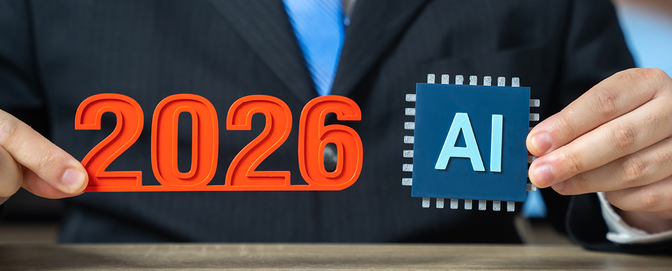
Stop fixing pages in isolation: a journey-first blueprint for multi-channel engagement

Picture this: your performance marketing team launches a $50,000 paid search campaign. Traffic spikes. Click-through rates soar, but conversions are flat. Your analytics show a 63% bounce rate for paid traffic, yet the same product pages perform beautifully for organic visitors. What's happening?
The truth is, your visitors aren't experiencing your website as a collection of isolated pages. They're experiencing it as a continuous journey that spans sessions, devices, and entry points. When you fix separate pages, you miss the bigger picture of how channel engagement actually works.
Gartner’s research shows that 50% of organizations already have a customer journey analytics setup, while 45% will start investing in it in the next 12 to 18 months. Here’s how you can stay aligned with the industry shift, and craft a blueprint for a smooth cross channel customer journey.
The multi-channel reality your analytics can't capture
Conventional analytics tells you what happened, but misses the motivation behind it. A user clicks through from a LinkedIn ad, lands on your homepage, and leaves within 10 seconds. Your analytics mark this as a bounce. But what if that same user bookmarked your brand, researched you on Google three days later, and converted through organic search?
Traditional analytics can capture the sequence of events but misses the story connecting them. It shows you:
- Session duration by channel
- Page views per visit
- Conversion paths through your funnel
What it doesn't show you:
- Why users from paid search have different expectations than email subscribers
- How mobile users from social media navigate differently than desktop users from organic search
- Whether returning visitors feel like they're continuing a journey or starting over
This disconnect becomes critical when you consider that customers now interact with brands across an average of 7-10 touchpoints before converting. Each touchpoint creates different expectations, mindsets, and behaviors, yet most teams design one-size-fits-all experiences.
Channel-specific expectations matter more than you think
Every acquisition channel primes visitors differently. Understanding these channel-specific expectations is crucial for effective customer journey analytics and optimizing your cross channel customer journey.
Paid search visitors arrive with high intent but low patience. They clicked because your ad promised to solve an immediate problem. If your landing page doesn't immediately validate that promise, they'll bounce because the experience doesn't match their mindset.
Social media visitors are in discovery mode. They're scrolling, engaging, and often clicking impulsively. They expect visual storytelling, social proof, and content that feels native to the platform they just left. Drop them onto a conversion-focused landing page, and you've broken their mental model.
Email subscribers already know your brand. They're further along in their evaluation and expect personalized, relevant content that acknowledges their relationship with you. Treating them like cold prospects wastes the trust you've already built.
Organic search visitors are often researching and comparing options. They expect depth, authority, and comprehensive information. They'll spend time exploring if you give them what they need to make informed decisions.
These differences create measurable impacts on engagement, conversion, and lifetime value. When your site experience aligns with channel expectations, bounce rates drop and engagement soars. When they don't, even qualified traffic converts poorly.
The journey-first approach to channel engagement
Rather than optimizing individual pages, successful teams think in terms of complete customer journeys. This means understanding how users move between touchpoints, what they expect at each stage, and how to create continuity across fragmented experiences.
Map expectations, not just behaviors
Start by understanding what each channel promises versus what your site delivers. If your LinkedIn ad emphasizes "instant results," does your landing page demonstrate immediate value? If your email newsletter promises "exclusive insights," does the linked content feel exclusive?
This requires going beyond traditional bounce rate analysis to understand the why behind user behavior. Create a customer journey map with qualitative insights that reveal how users interpret your messaging, navigate your flows, and make decisions across multiple sessions.
Design for continuation, not conversion
Most teams optimize for immediate conversion, but customers often need multiple touchpoints to build trust and make decisions. Instead of treating each visit as a standalone interaction, design experiences that acknowledge previous engagement and help users continue their journey.
This might mean:
- Pre-filling forms for returning visitors
- Showing relevant content based on previous page views
- Acknowledging their referral source in your messaging
- Providing clear next steps that match their stage in the journey
Test across the full journey, not just individual pages
Traditional A/B testing focuses on individual page elements: headlines, CTAs, images. But cross channel customer journey optimization requires testing entire flows across multiple touchpoints.
This means testing:
- How users experience your site after engaging with different campaign types
- Whether your messaging feels consistent across channels
- How well your site supports users who return through different entry points
- Whether your navigation makes sense for users with different levels of brand familiarity
GUIDE
How to engage and convert prospects from every customer channel
Why customer journey analytics need human insight
The most sophisticated customer journey analytics platforms can track users across devices, sessions, and channels. They can identify patterns, predict behavior, and optimize experiences in real-time. But they can't tell you why users behave the way they do.
That's where human insight becomes crucial. Understanding the emotions, expectations, and decision-making process behind user behavior allows you to:
- Validate assumptions about channel differences. Your analytics might show that social media traffic has a higher bounce rate, but user research reveals whether that's because of mismatched expectations, unclear navigation, or something else entirely.
- Identify friction points. A user might spend three minutes on your pricing page before leaving—are they comparing options, getting confused by your structure, or unable to find the information they need?
- Discover nuanced insights. Customer journey analytics show you the path users take, but not how they feel along the way. Are they building confidence in your brand, or becoming increasingly frustrated?
- Optimize for long-term user engagement. Users might convert through your funnel but still feel confused or uncertain. This impacts satisfaction, retention, and advocacy—metrics that don't show up in traditional conversion tracking.
Building experiences that work across channels
When you understand how users actually experience your cross channel customer journey, you can design more effective engagement strategies:
Create channel-aware entry experiences
Instead of directing all traffic to the same homepage, create landing experiences that acknowledge how users arrived and what they're likely looking for. This doesn't mean creating dozens of different pages. It means adapting your messaging, layout, and calls-to-action to match channel expectations.
Design for re-engagement, not just acquisition
Most marketing teams focus heavily on first-time visitors, but returning users often have the highest conversion potential. Design experiences that help users pick up where they left off, rather than starting over each time.
Align cross-functional teams around user needs
Channel engagement isn't just a marketing problem as it requires alignment between marketing, UX, content, and development teams. When everyone understands how users actually experience your site, you can create more cohesive experiences that drive better results.
Use insights to inform campaign strategy
Understanding how users from different channels behave on your site should inform how you structure campaigns, write ad copy, and set expectations. This creates a virtuous cycle where better targeting leads to better site experiences, which leads to better campaign performance.
The path forward: from pages to journeys
Successful digital marketing teams are optimizing entire customer journeys. They understand that channel engagement depends on creating experiences that feel continuous, relevant, and aligned with user expectations.
This requires moving beyond traditional analytics to understand the human story behind user behavior. When you know why users from different channels behave differently, you can create experiences that meet them where they are and guide them toward conversion.
Smooth customer journeys in a multi-channel landscape build trust, reduce friction, and deliver value at every touchpoint. That's the difference between fixing pages in isolation and building engagement that lasts.
Ready to understand how users actually experience your cross channel customer journey? Discover more in our guide, Optimizing the funnel: strategies for increasing channel engagement.
Key takeaways
- Journey optimization means viewing your customer’s journey as one that spans multiple sessions, devices, and entry points
- Understanding where visitors come from and what they want is key, as channel-specific expectations drive user behavior
- The emotional journey enables optimization for real user goals, driving better business outcomes
- Designing for re-engagement helps returning users continue their journey rather than starting over
- Test entire flows across multiple touchpoints, not just individual page elements
- Align cross-functional teams around user needs to create cohesive experiences
FAQ
Q: What's the difference between customer journey analytics and traditional web analytics?
A: Traditional analytics focus on individual sessions and page metrics. Customer journey analytics track users across multiple sessions, devices, and touchpoints to understand how they engage with your brand over time.
Q: How do I get started with journey-first optimization?
A: Map your acquisition channels and identify the expectations each sets. Audit 3-5 key landing pages for alignment with your ads, emails, or social content. Start with your highest-traffic, lowest-converting combinations and use human insights to understand the disconnect.
Q: How do I measure success when optimizing entire journeys?
A: Track journey-level metrics like assisted conversions, multi-session paths, and engagement depth by channel. Monitor qualitative metrics including user satisfaction, task completion rates, and friction points. Most importantly, measure alignment between channel promises and delivered experiences.
Q: How should I approach A/B testing for multi-channel journeys?
A: Test flow-level experiments, not just single pages. Test channel-specific landing experiences, re-engagement strategies for returning visitors, and messaging consistency across touchpoints. Always segment tests by acquisition channel, as what works for one audience may not work for another.
Q: How do I handle the complexity of managing channel-specific experiences?
A: Start with your highest-impact channel mismatches. Create adaptable templates and frameworks rather than completely custom experiences. Focus on systematic improvements that scale across touchpoints, like dynamic messaging based on referral source.
GUIDE





